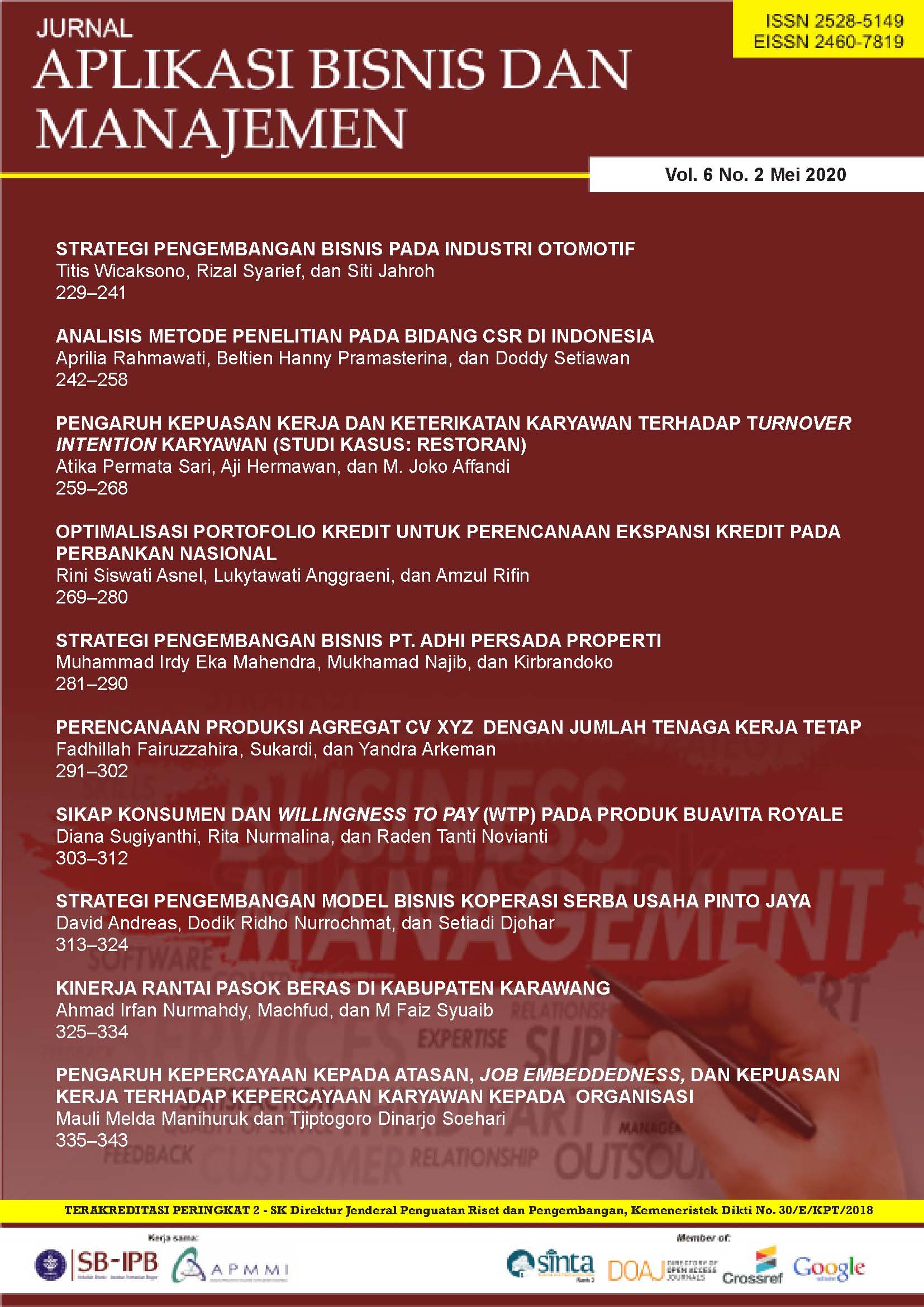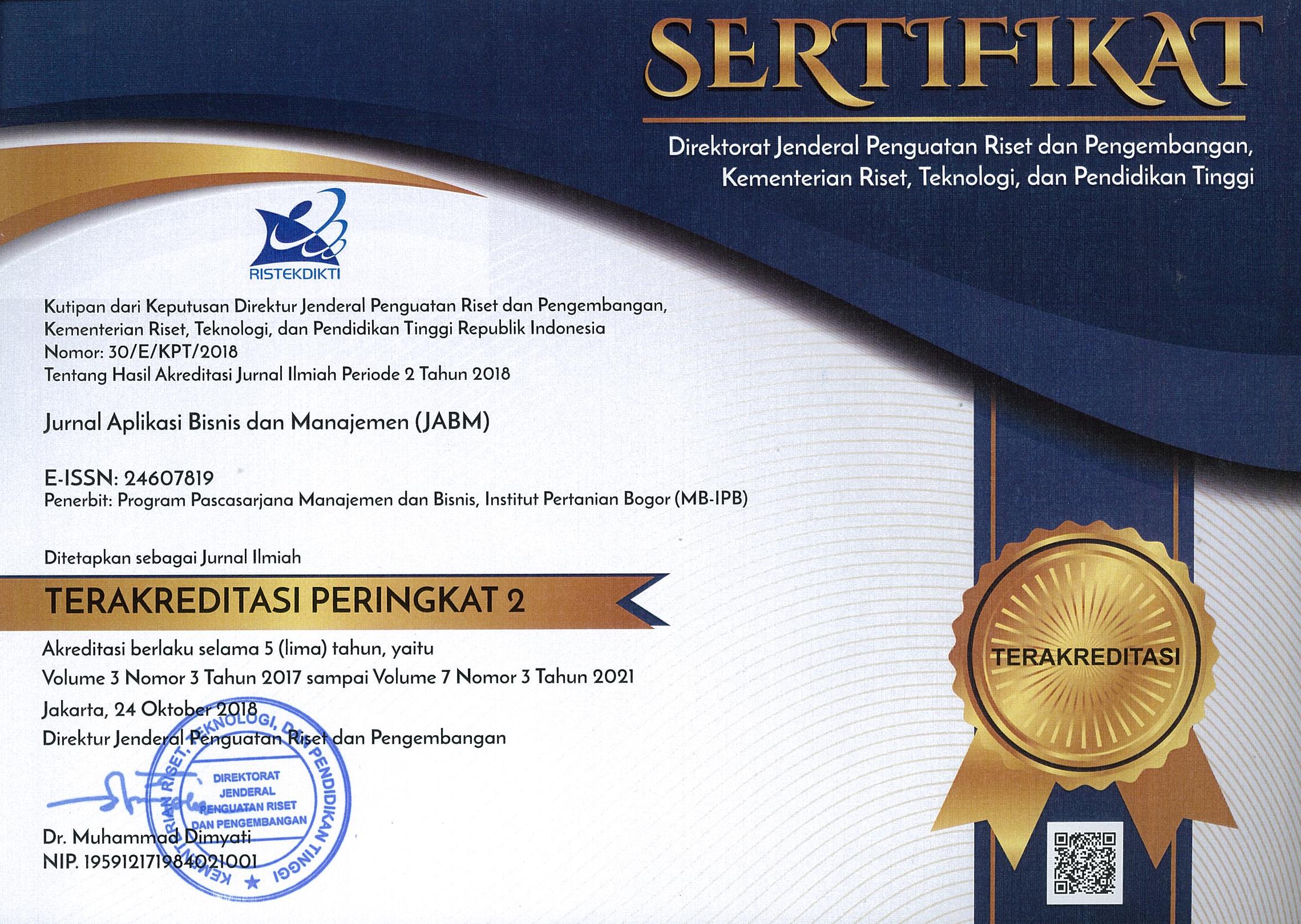Pengaruh Kepuasan Kerja dan Keterikatan Karyawan Terhadap Turnover Intention Karyawan (Studi Kasus: Restoran)
The Effect of Job Satisfaction and Employee Engagement on Turnover Intentions (Case Study: Restaurant)
Abstract
Karimata is a restaurant that has two branches at Taman Mini Indonesia Indah (TMII), Jakarta and Sentul, Bogor. Even though they are in the same management, both of them have different turnover rates. The average annual turnover at TMII is higher than in Sentul. The purpose of this study was to examine job satisfaction, employee involvement and turnover intentions in both Karimata restaurant locations to reduce turnover rates. The method used is quantitative analysis. The data used is primary data which obtained through filling out questionnaires directly to all permanent employees. Data were collected by census method. The data were analyzed by SEM (Structural Equation Modeling) using SmartPLS software. This study concludes that indicators that affect job satisfaction in TMII are tasks, promotion opportunities, and colleagues, while Sentul branches are salaries, assignments, promotion opportunities, supervisors, and colleagues. The indicator that influences employee involvement in TMII is sincerity and dedication, while in Sentul is dedication. The indicator that influences turnover intentions in TMII is the intention to leave, while in Sentul there is no indication of employees who intend to leave, look for other jobs or think of quitting.
Keywords: employee engagement, job satisfaction, restaurant, SEM, turnover intention








